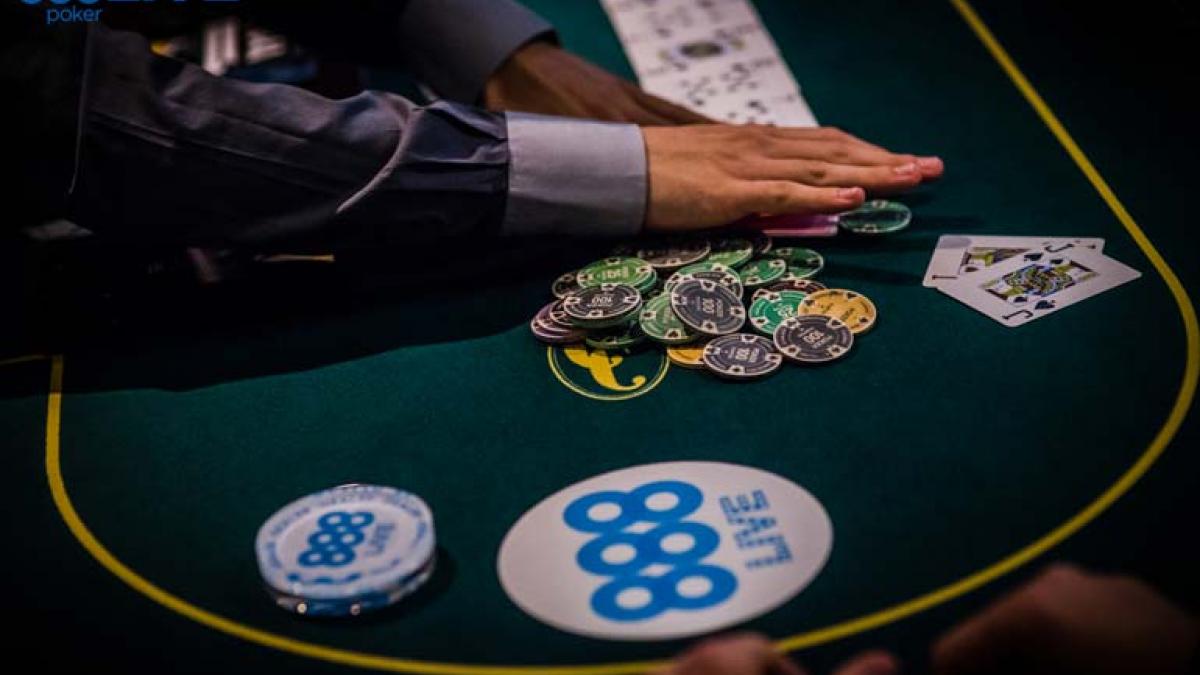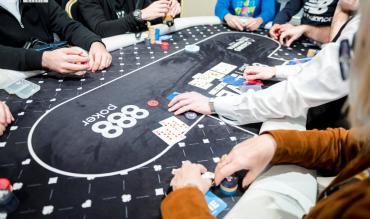Understanding balance in poker can be tricky. Perhaps we immediately think of complex poker ranges along with precise betting and checking frequencies.
Understanding how balance works doesn’t need to be difficult though. In this short guide, we’ll take the easiest route to understanding how balance in poker works.
We’ll do this in three simple stages where we transition from an unbalanced approach to a balanced approach.
Poker Balance Stage No. 1 – Value Betting with Appropriate Sizings
We are likely aware of the idea that we should be betting our made hands on the river for value. Depending on the exact strength of our holding we should select an appropriate value bet size. Easy enough right?
In an ideal world, we should bet our strongest value hands for a large bet sizing and our thinnest value hands for a small bet sizing.

If our opponent doesn’t pay close attention to our strategy we can easily make money this way. Although we never bluff, and although our small bet sizing signals weakness; we only have a problem if our opponent tries to create a counter strategy.
Poker Balance Stage No. 2 – Bluffing for Each Value Bet Sizing
Let’s think further about the poker strategy described where we only bet the river for value and never bluff. This is an example of an “unbalanced” strategy.
Our opponent can exploit our strategy by simply folding all of his mid-strength hands when we bet the river.
By starting to sometimes bluff the river we force our opponent to think twice about folding. If he always folds his mid-strength hands he needs to worry about us running him over with bluffs. Even though he’ll sometimes end up paying off our value hands, he needs to sometimes call to prevent us from being able to bluff too profitably.
Since we are using a range of different value bet sizings (depending on our hand strength), we should also bluff using the same range of sizings. This prevents our opponent from being able to spot “bet sizing tells” where he realizes we are bluffing too much or too little with certain sizings.
Poker Balance Stage No. 3 – Protecting the Small Bet Sizing Hand Ranges
Our strategy is close to being balanced, but there are still some conclusions our opponent can draw when he sees our bet sizings.
Although we have both bluffs and value hands for every sizing, we are never very strong when we use a small bet sizing. This is because we are using a larger bet sizing with our strong value hands.
The solution here is to bet small with a small number of our very strong poker hands. In poker, this is a concept that is referred to as range protection. Our opponent can no longer assume we are weak just because we bet small. When villain raises against our small bets, we’ll be able to re-raise our strongest hands for value (along with a selection of bluffs).
We now have a good understanding of how balance works in poker. Things would get more complex if we were to do a deep dive on balance, but simply understanding the basics can go a long way.
| Bet Sizing | Approach |
|---|---|
| Large | Bet strong hands for value and bluffs. |
| Medium | Bet medium strength value hands, bluffs. Occasionally protect with strong value. |
| Small | Bet thin value hands and bluffs. Protect the range. Occasionally protect with strong value. |
Advanced Poker Balance Concept No. 1 – Bluff to Value Ratios
At this stage, we understand when we value bet for a certain sizing, we also need to show up with an appropriate number of bluffs.
A logical assumption might be that we should be bluffing half of the time when we bet the river.
This is not accurate, however; in theory, we should show up with value hands more often than bluffs. The exact ratio of value hands to bluffs depends on the size of the river bet. The larger we bet, the more often we should be bluffing.
As an example, imagine we are making a pot-sized river bet. According to theory, we should be value betting twice as often as we are bluffing. Check out this 888poker article on bet sizing for a more detailed explanation on how this is calculated.
Advanced Poker Balance Concept No. 2 – Mixing up Ranges
If we look beneath the complexity of balance, we find that almost everything is based on a key concept – mixing up ranges.
We don’t want to make it obvious which type of hand we have by always taking the same line.
We can apply this logic when making decisions on the earlier streets. For example, if we flop a flush draw, we don’t want to always bet. We will ideally sometimes bet and sometimes check.
In poker, this is referred to as a mix strategy. This can sometimes be a confusing concept to newer players who might try to categorize all hands as either a pure bet or a pure check.
However, always taking the same action with the same hand makes it easier for our opponent to figure out what types of hands we have and how to play against us exploitatively.
Poker Balance Misconception No. 1 – Balanced Play Means Always Using the Same Bet Sizing
It seems logical that if we always use the same bet sizing, that we are not giving away any information regarding the strength of our hand.
This is not the same as saying our play is balanced though. Even if we always use the same action (for example betting 100% of our holdings for a small sizing) this does not mean that our strategy is balanced.
As we’ve touched on, being balanced involves having the right proportion of strong hands to weak hands within our range. If we have an unbalanced selection of hands, it doesn’t matter if we always use the same bet sizing or take the same action.
Poker Balance Misconception No. 2 – We Should Always Try to Play Balanced Poker
Discussing balanced play is more popular than ever, but it doesn’t mean that balanced play is the ideal way of playing poker.
When we focus purely on playing a balanced strategy, we miss out on opportunities to exploit the mistakes our opponents are making.
Taking advantage of our opponents’ mistakes can generate much higher win rates than playing a balanced style.
Although it’s useful to have a solid understanding of balanced play, in most cases we want to deliberately avoid playing a balanced strategy if we want to maximize our potential earnings.
Poker Balance Misconception No. 3 – We Should Deliberately Make Less Money with Certain Hands
A common misconception is that balanced play involves deliberately losing with certain hands hoping to boost the profitably of other hands.
An example might be running a reckless bluff hoping that our value bets get paid off more in the future.
Although some players might attempt this for exploitative reasons, this is not an example of how balanced play works. Balanced play always takes the most profitable line with every single hand.
We can think about balanced play this way:
Balanced play is a by-product of taking the most profitable line with every single hand in our range when playing against a perfect GTO opponent.
Summary of Balance in Poker
The broadest way of thinking about balance is that we need to be able to show up with a range of different hand types at any given moment.
If we take a certain line only with very strong or very weak hands, we give our opponent an opportunity to develop a winning counter strategy.
However, we have seen that there are certain rules to balance. For example:
- We should have the correct proportion of strong to weak hands when we bet.
- There is a limit to how large we can bet with thin value hands.
- We should “protect” our smaller bet sizes by occasionally betting strong hands small.
We have also seen that using a single sizing does not automatically make us balanced. Perfectly balanced play makes use of multiple bet sizings and is a theoretically correct part of poker.
Finally, we have seen that although balance is an extremely useful concept, it doesn’t necessarily mean we should be looking to play a balanced strategy. Exploitative poker (where we take advantage of our opponent’s mistakes) can generate a much higher win rate than a balanced approach.


